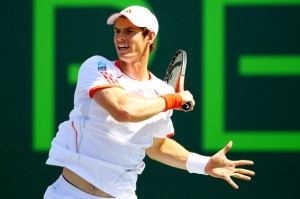By Thomas Swick
At around 1 pm yesterday, Agnieszka Radwanska walked onto the stadium court, placed her heavy bag on her chair, and took out a plastic bag of bottled drinks as if she had just entered her compartment for a long train ride.
It was the express from Warsaw to Krakow, as the young Pole dispatched Venus Williams in straight sets. She was helped by the fact that Williams moved on the court like someone who had just gotten off a red-eye.
I asked Radwanska at her press conference if she had noticed her opponent’s lethargy. “Well, um,” she said, “well, about that, you really have to ask her.” Williams had already had her press conference, so I didn’t have the opportunity to ask her: “Did Radwanska notice that you were tired?”
Williams’ sluggish performance was echoed outside the stadium. Lanes that last week had brimmed with people now carried a wandering straggler or two. The Corona and Ben & Jerry’s stands outside Court 8 stood abandoned.
The bleachers had already been removed from Court 6, giving a view onto a young man standing at the net and having his picture taken by a young woman standing on the baseline. Next door on Court 3, empty bottles of water bubbled a bench, and a white towel curled up in a chair. The circus had left town.

Or rather, moved into the big top. A good-sized crowd watched Andy Murray take on Janko Tipsarevic on the stadium court. During the third set, as I looked out over the crowd, it occurred to me that tennis is that rare sport (golf another) in which fans frequently dress like players. In baseball, basketball, football, hockey, you get the jersey, but in tennis you often see the whole outfit: cap, shirt, shorts, white socks, sneakers. A sportswriter told me he once saw a guy even wearing a wristband, as if he were ready, in an emergency, to fill in for an injured player.
It also struck me that the Sony Ericsson is probably the only tournament at which Andy Murray hears “Vamos Andy!”
After the match, the food court came to life, as dawdling day session crowds mixed with early-bird night session folks. A young man draped in a Serbian flag walked past wearing what looked like a military hat, minus a brim and with a diagonal crease on the top.
“It’s a sajkaca,” he told me. “It’s a traditional Serbian hat. Some people in villages still wear it. It goes very well with slivovitz.”
Not far away, a man sat at the Corona bar dressed for a match. Which made sense, since he had just worked the Murray-Tipsarevic three-setter. Glen Outlaw was the tournament’s oldest ball boy and, unlike most ball boys, he was quenching his thirst with a Negra Modelo.
He was 52. I asked if players are surprised to see him.
“Sometimes,” he said. He told of working a Nadia Petrova-Maria Kirilenko doubles match and being asked by Petrova if he was a ball boy. “After I said ‘yes,’ she said: ‘I feel bad asking you to get stuff for me.’”
Glen will be working both finals, but not at the net, because there – on the stadium court – you need to kneel, and that was too difficult, at his age, to do for an entire match. Standing was not an option (as it is on the outside courts). “They tell us,” he said: “’You have the ability to influence a match and the responsibility not to.’”
His favorite position was chair side baseline, because “that’s where the players take the towel. It gives you more interaction.” I asked if a player ever said ‘thank you.’ “Some do,” he said. “There was a guy, I can’t remember his name, who said ‘thank you’ every time you gave him a ball.”
The gentleman’s game lives.
